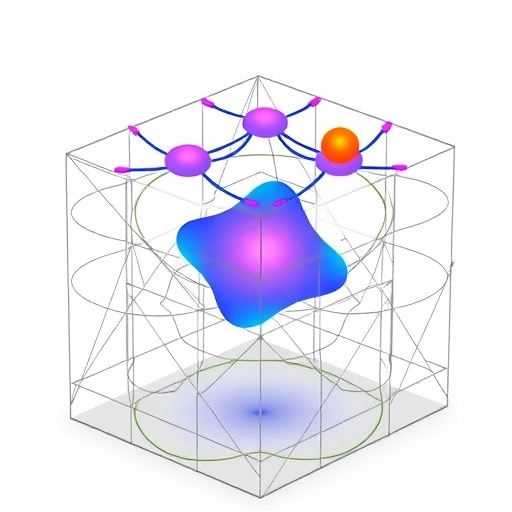Topological photonics and acoustics stand at the forefront of optical and sonic manipulation, allowing for unprecedented control over light and sound at boundaries. The attractive feature of these fields is their relevance not only to fundamental science but also to practical applications such as designing advanced materials that can be tuned to behave in novel ways. However, one significant challenge in this area has been the use of supercell techniques, which have long been the conventional approach to computing boundary effects. These methods, despite their ubiquity, come with considerable drawbacks.
The supercell method involves calculating the properties of a large periodic structure made up of smaller units. As the sizes of these supercells increase, the computational resources required for simulation escalate dramatically. This can lead to significant inefficiencies, making it impractical for researchers, especially when exploring complex surface states. Supercell methods also grapple with the limitations in distinguishing the surface states that reside at opposing boundaries. The finite-size effects of the supercell grow increasingly problematic, often blurring the lines between surface and bulk states.
To address these limitations, a new study unveils two innovative computational methods aimed at achieving precise characterizations of topological surface states for semi-infinite systems. These methods present a sharp contrast to the conventional supercell approach. The two emerging techniques are the cyclic reduction method and the transfer matrix method. Each offers unique strategies that not only simplify the computational process but also provide more accurate insights into boundary behaviors in diverse surface configurations.
The cyclic reduction method shines in its cleverness, utilizing an iterative approach to invert the Hamiltonian for a single unit cell. By efficiently managing the calculations at the unit cell level, this method drastically reduces the required computational resources. This makes it particularly attractive for researchers who are often constrained by processing capabilities and time. By focusing on a single unit, the cyclic reduction method fosters an intricate understanding of local surface states without the need for excessively large computations.
On the other hand, the transfer matrix method introduces a nuanced eigenanalysis of a transfer matrix derived from a pair of unit cells. This strategy enables researchers to examine the propagation characteristics of waves across boundaries and exhibits the ability to isolate boundary modes skillfully. The transfer matrix technique provides robust insights while maintaining computational efficiency, thus serving as an apt alternative to older methods. The comparison of these two methods reveals that they are not only complementary but also combine strengths to open up new pathways in topological studies.
The study also includes rigorous numerical benchmarks using real-world cases like gyromagnetic photonic crystals, valley photonic crystals, spin-Hall acoustic crystals, and quadrupole photonic crystals. Importantly, these benchmarks demonstrate that both new methods can effectively sort through complex boundary modes. The advancements enable researchers to analyze the surface density of states with much higher fidelity than previously achievable in smaller computational setups.
Furthermore, the ability of these techniques to significantly decrease computational costs highlights their potential impact. With the increased speed and efficiency of simulations, researchers can now explore topological systems more extensively and validate their findings against experimental data. Direct comparisons with near-field scanning measurements become more feasible as the methods reduce computational overhead, providing critical data for future advancements in topological materials and devices.
In conclusion, this groundbreaking work in topological photonics and acoustics is a clarion call for embracing more efficient computational methods in research. The cyclic reduction method and transfer matrix method not only simplify the computational landscape but also push the envelope in understanding surface state characteristics more thoroughly. With these tools, researchers are empowered to delve into the realm of topological materials with renewed vigor, setting the stage for innovative applications that harness the unique properties of light and sound. As the field continues to evolve, these methods could redefine approaches to engineering devices and materials, ushering in a new era of optical and sonic capabilities.
As topological artificial materials gain traction in scientific discourse, the implications of these methodologies reach far beyond academic inquiry. They touch on practical applications such as sensor technologies, communications, and energy harvesting systems, making the ability to manipulate surface states not just a theoretical exercise but a gateway to tangible innovations.
The potential for novel topological devices based on these systems offers exciting prospects in transdisciplinary fields where photonic and acoustic functionalities converge. The findings promise to inspire further research and exploration, painting a future where controlled light and sound manipulation achieves remarkable feats across various domains. As researchers enthusiastically look forward to leveraging these efficient algorithms, the implications for advancing science and technology in topological systems are profound and far-reaching.
Subject of Research: Topological Photonics and Acoustics
Article Title: Efficient algorithms for the surface density of states in topological photonic and acoustic systems
Article References:
Sha, YX., Xia, MY., Lu, L. et al. Efficient algorithms for the surface density of states in topological photonic and acoustic systems.
Nat Comput Sci (2025). https://doi.org/10.1038/s43588-025-00898-3
Image Credits: AI Generated
DOI: https://doi.org/10.1038/s43588-025-00898-3
Keywords: Topological Photonics, Acoustics, Supercell Methods, Cyclic Reduction Method, Transfer Matrix Method, Computational Efficiency, Surface Density of States, Boundary Modes, Gyromagnetic Photonic Crystals, Valley Photonic Crystals, Spin-Hall Acoustic Crystals, Quadrupole Photonic Crystals.
Tags: advanced materials designboundary effects in materialscomputational methods in physicsfinite-size effects in simulationsinnovative approaches in topological systemslight and sound manipulationsemi-infinite systems characterizationsupercell technique limitationssurface density of states optimizationsurface versus bulk states distinctiontopological acousticstopological photonics





